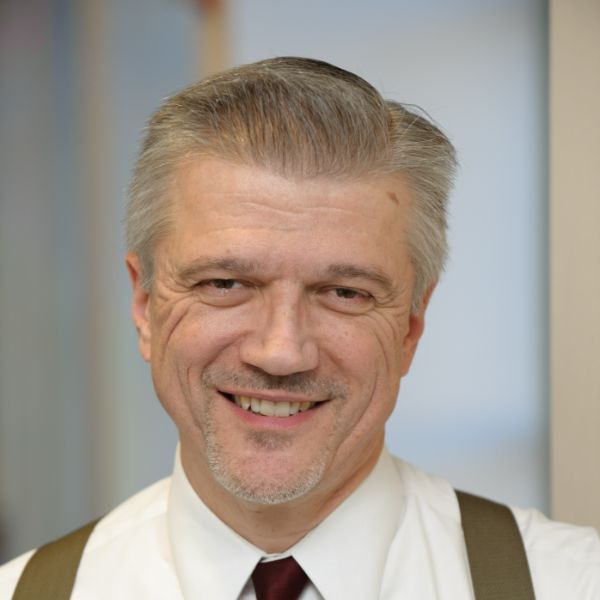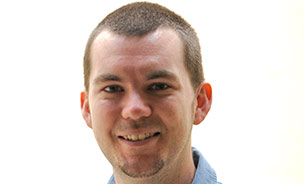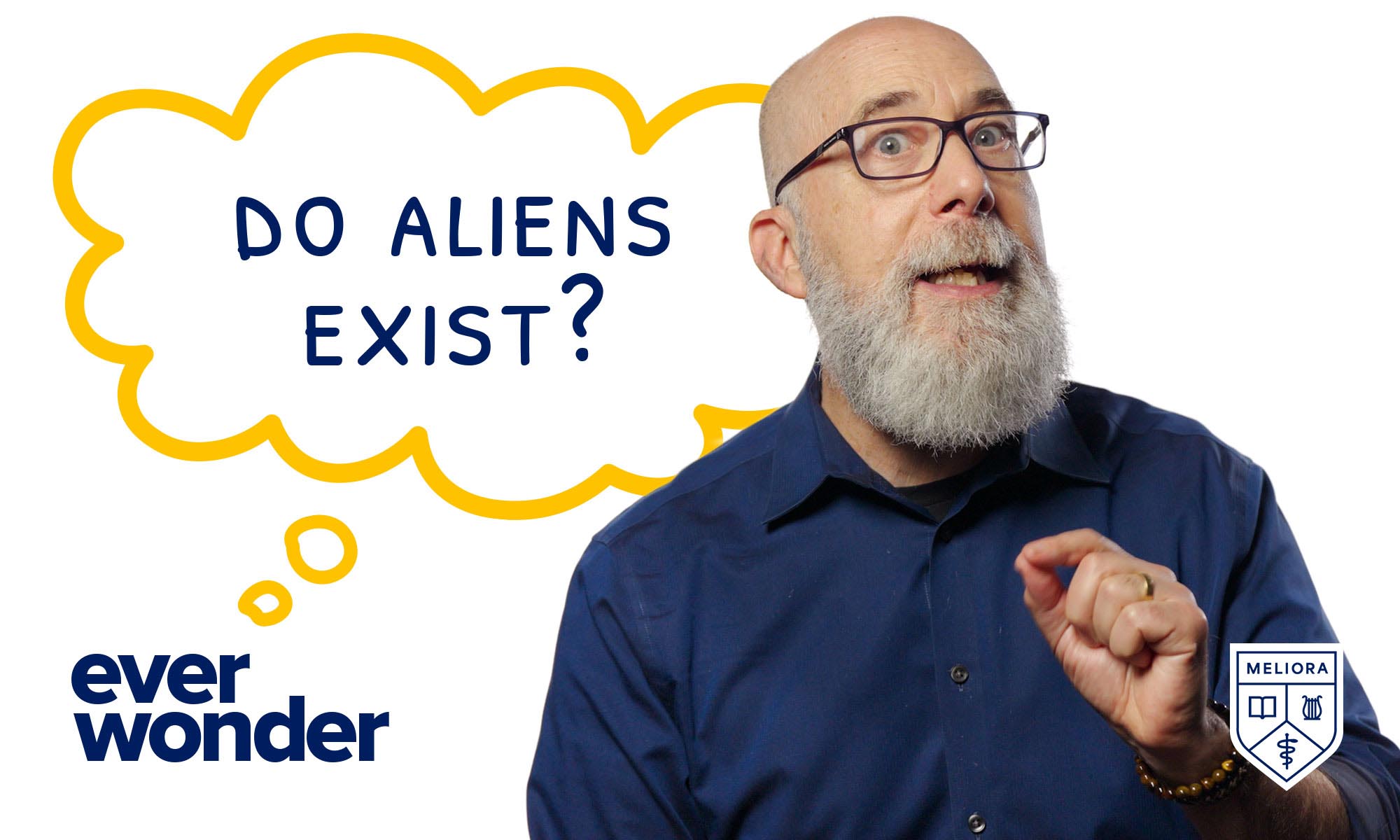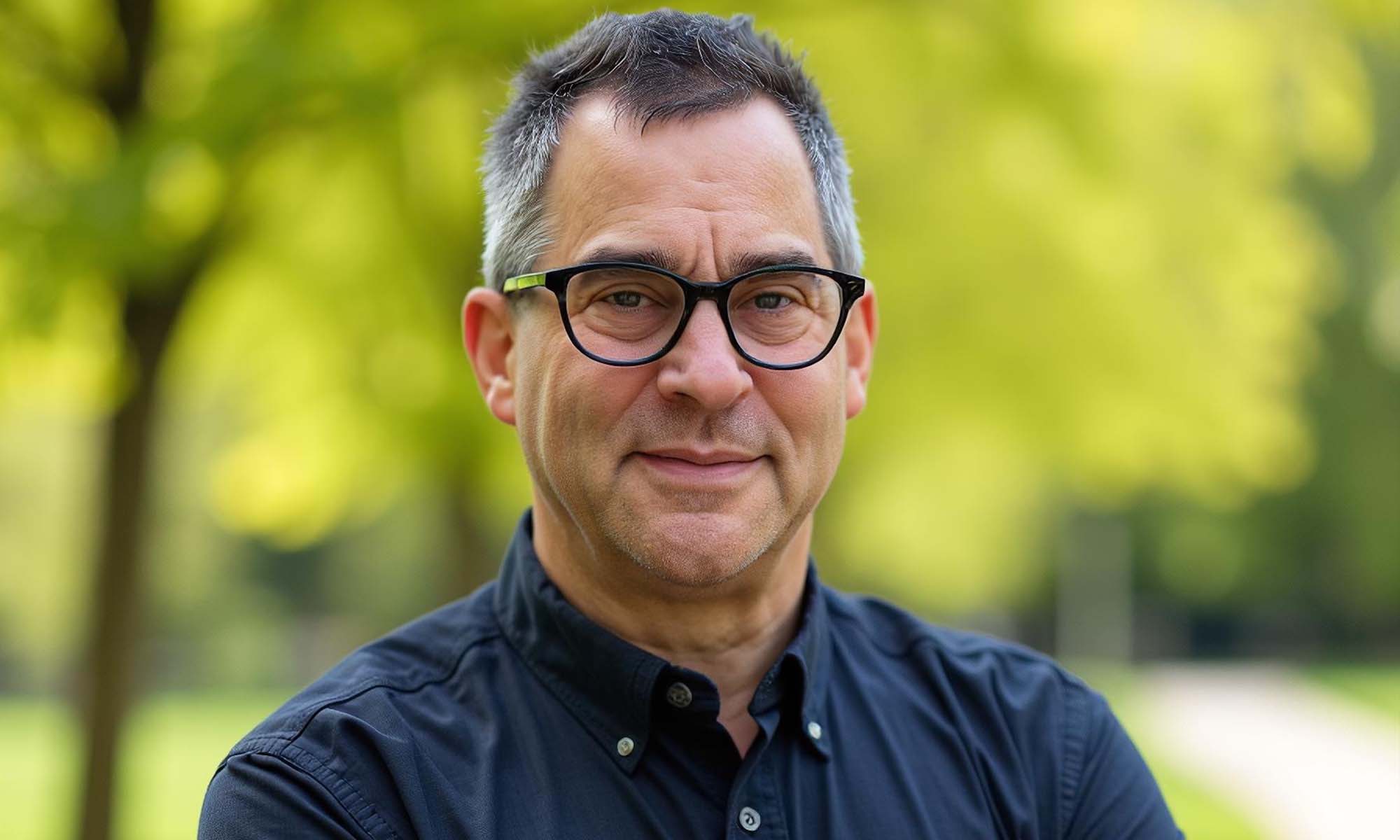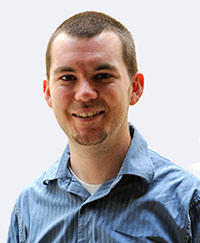 Daniel Weix, an associate professor of chemistry, specializes in developing better ways of creating molecules with the goal of speeding up the discovery of useful compounds, including pharmaceuticals.
Daniel Weix, an associate professor of chemistry, specializes in developing better ways of creating molecules with the goal of speeding up the discovery of useful compounds, including pharmaceuticals.
Weix earned his PhD from the University of California, Berkeley, and joined the Rochester faculty in 2008. He’s received numerous honors, including the Thieme Chemistry Journal Prize, an NIH Ruth L. Kirschstein National Research Service Award, an Alfred P. Sloan Fellowship, and a Camille Dreyfus Teacher-Scholar Award.
Q & A
1. Why is it important to develop new ways of creating molecules?
Dan Weix receives Novartis Early Career Award
Dan Weix wins Dreyfus Teacher-Scholar Award
New molecules are the key to solving many of the challenges we face today. The most obvious place is in medicine, where the right molecule could allow us to treat or even cure a disease that had previously been untreatable. We saw this recently with the discovery of effective treatments for hepatitis C, which have transformed how we deal with a worldwide epidemic. Less obvious, but no less transformative, have been advances in solar energy production (low-cost organic solar cells) and safety (sensors to detect explosives), made possible by new molecules. While it has been true for many years that we can make most molecules that we can imagine, the reality is that difficult-to-make molecules are often not made because of cost and time limitations. How many potential solutions have we missed for lack of sufficient chemistry? This is a part of what drives me and the rest of the synthetic organic chemistry community.
2. What are the major obstacles to coming up with alternate methods of molecule formation?
Organic chemistry is a creative discipline as well as a science. Part of the challenge is selecting a good problem – what is really needed? This isn’t always obvious because you have to look for what is missing – there are few studies that state “we need a reaction that can make this molecule.” Once you have a problem worth solving, then you need to imagine a solution that will be general, uses readily available starting materials, is affordable, and is easy to do. Finally, you need to figure out how to meet your criteria. In my group, we also set a high premium on solutions that allow us to study fundamental questions in chemistry. Like all lofty goals, hard work, careful experimentation, and a bit of luck all play a role.
3. Much of your research involves direct coupling. What is it?
In the organic chemistry course that I teach to freshmen, they learn how to make new chemical bonds between the carbon atoms of two starting materials. In nearly all cases, one partner has a nucleophilic atom (an atom with excess negative charge that is seeking a positive charge) and the other is an electrophilic atom (an atom with excess positive charge that is seeking negative charge). In reacting with each other, a nucleophile and an electrophile both find what they’re seeking. Unfortunately, it’s not that simple in the real world. The challenge in chemistry is that carbon nucleophiles are more rare than carbon electrophiles, limiting the combinations we can make from available materials. A long-standing idea in chemistry was the obvious – why not react two different electrophiles? This would give us many more possible combinations and be a big help in the synthesis of new molecules.
4. What progress have you made in your work?
Our studies have uncovered two general ways to accomplish the 100-year-old goal of selectively coupling two different electrophiles. The first uses a nickel catalyst alone with an unusual radical intermediate (a carbon that has an unpaired electron) and the other relies on the cooperation of two different metals—nickel and palladium. Besides finding several new chemical reactions that fit our criteria (general, readily available starting materials, affordable, easy), our studies have uncovered some of the fundamental reasons why these reactions work and are selective. This has allowed us to design new reactions and to fix reactions that do not work as we want them to work. Unexpectedly, it appears that these fundamental discoveries can be applied broadly to metal-catalyzed reactions.
5. How much further do you need to go in order for your work to be applied in the pharmaceutical and other industries?
Our reactions are already being applied in the pharmaceutical industry. The larger availability of carbon electrophile starting materials is appealing for “discovery” chemistry, where large numbers of derivatives are made. What we didn’t anticipate is that our chemistry usually provides some amount of product, even if not yet in a high yield. For discovery, this kind of reliability and generality is important. Although high yields are welcome, they aren’t essential. The flip side is “chemical development,” where increasingly large quantities of a single molecule must be made to support clinical trials. High yields and selectivity are required because it is expensive to purify mixtures of products on a large scale. Here, too, our chemistry has found a place because of readily available starting materials and because it is operationally easier than several alternative approaches.
We are currently working to make our existing chemistry more general as well as to discover new types of carbon electrophiles that will participate. This now often involves suggestions from industrial users and even collaboration. These interactions are mutually beneficial – we help them with new chemistry, and they give us ideas, as well as problems to solve.

